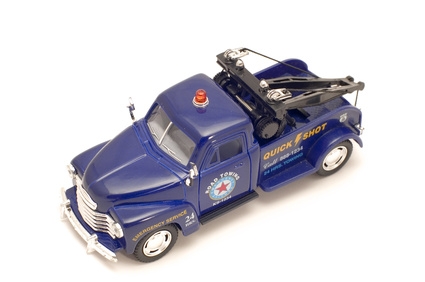
The Ontario Drivers' Handbook highly discourages towing a car yourself, but if you must, there are a few traffic laws you must abide by. The car being towed must, in a sense, become an extension of the car towing it, complete with indicating lights and a proper, secure hitching.
Ontario requires trailers weighing more than 3,000 lbs to have their own linked braking system. Because of this, a car (most cars weigh more than 300 lbs) in tow by another vehicle must have a driver inside to apply braking pressure at the same time as the lead car in order to prevent the towed vehicle from bumping into the tower.
Using a simple tow cable attached to bumper hooks in order to link the disabled vehicle to the tow car is easy, but deciding how long the cable should be can be tricky. If it is too short, you risk damage to both vehicles during braking. If it is too long, you risk swinging the towed vehicle into other lanes or clear off the road when maneuvering or braking. The towed cars flashers must be engaged at all times.
If possible, it is best to hire a tow truck to tow cars or a flatbed truck for all-wheel drive and dry clutch vehicles. Adjust your mirrors to see a large part of the towed vehicle and stay out of passing lanes. The disabled vehicle, as with all trailers that size, must have a valid Ontario plate with sticker.